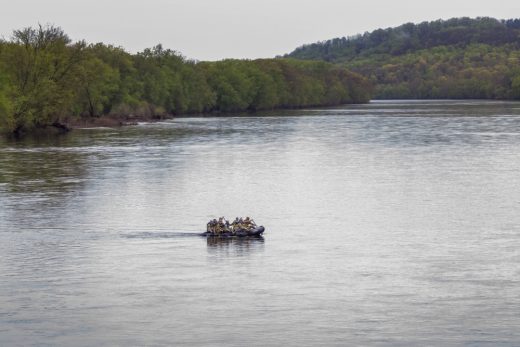
Credit: Mark C. Olsen/New Jersey National Guard
Bucks County remains under a drought watch, state officials said.
The Commonwealth Drought Task Force met last week and said that while six counties returned to normal, 15 counties, including Bucks County, are under drought watch or warning, per the Pennsylvania Department of Environmental Protection.
The drought watch ended for Berks, Chester, Clarion, Fayette, Lehigh, and Venango counties.
Adams, Bucks, Cameron, Cumberland, Dauphin, Franklin, Fulton, Huntingdon, Lancaster, Lebanon, Montgomery, Northampton, and Perry counties are still on drought watch.
York County is under drought warning to aid water conservation efforts.
Public water suppliers have adopted voluntary or mandatory water conservation due to lingering precipitation deficits and some groundwater wells not fully recovering.
While some Bucks County water suppliers are pushing for conservation, none in the Levittown area are.
For a map of drought declarations updated daily, see the Pennsylvania Department of Environmental Protection drought web page.
State officials determine drought status using data from water suppliers and indicators like precipitation, surface water flow, groundwater levels, and soil moisture.
Residents under drought watch should cut water use by 5 to 10 percent, or three to six gallons daily.
There are a number of ways to conserve water at home, including:
- Run the dishwasher and washing machine less often, and only with full loads.
- Shorten the time you let the water run to warm up before showering and take shorter showers. The shower and toilet are the two biggest indoor water guzzlers.
- Check for and repair household leaks. For example, a leaking toilet can waste up to 200 gallons of water daily.
- Install low-flow plumbing fixtures and aerators on faucets.
- Replace older appliances with high-efficiency, front-loading models that use about 30% less water and 40-50% less energy.








